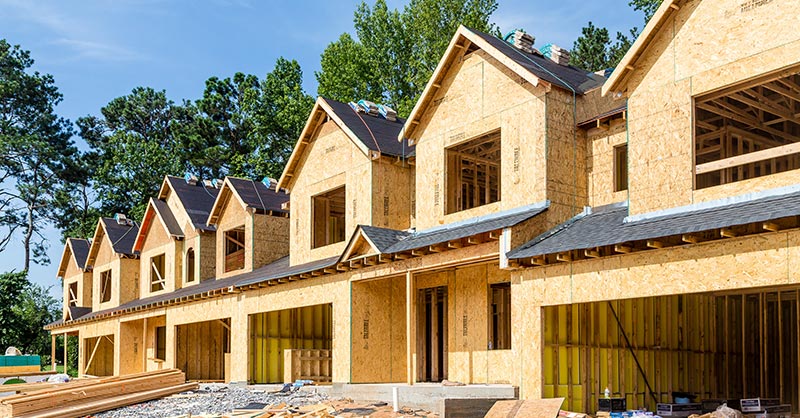Looking forward to 2022!

As we kick off the new year, many construction industry analysts are making projections about the year ahead. Several core themes emerge from their research:
- Residential construction will have another good year. Most analysts believe single-family home construction will continue to rise in 2022. Robust growth in the multi-family market is expected along with the continued shift to smaller suburban projects. Single-family builder confidence remains high.
- Building material prices will remain high, but should begin to pull back later in the year. As we’ve all learned by now, the pandemic is not going away and neither are the supply chain issues that are plaguing the market, driving up prices. According to data from the Bureau of Labor Statistics (BLS), the Producer Price Index for construction materials has jumped dramatically over the last two years. Costs are being driven by supply chain challenges in addition to insufficient production. Despite the demand for lumber, for example, sawmill output in the US has lagged. Industry analysts expect prices to continue to be elevated, but to ultimately moderate mid-year.
- Higher interest rates will pressure housing affordability. Throughout 2021, home prices rose sharply with demand. Housing affordability will continue to be a challenge this year. Analysts expect the Fed will raise the federal funds rate over the course of 2022. The 10-year Treasury rate has already risen from 1.4% at the start of December to higher than 1.7% during the second week of January1. The average 30-year-fixed-rate mortgage is also expected to increase to 4% by the end of the year.
- Supply chain challenges will continue. Global shipping delays, congestion at ports and challenges in the commercial trucking industry have all contributed to bottlenecks in material delivery. As a result, analysts continue to expect building projects to take longer. When surveyed, most small construction businesses report that material delivery delays are impacting their ability to complete projects on time. Some experts feel that home builders will ultimately have more success overcoming material shortages this year.
- Labor shortage and rising cost of labor will persist. Labor issues in the market pre-dated the pandemic, but COVID-19 has certainly exacerbated the issue within the construction sector. The National Association of Home Builders reports that the count of open construction jobs has declined to 345,000 in November, but this is after reporting the highest measure in the history of the data series in October of 445,000.2 Homebuilders will most likely need to be paying workers more. BLS most recently reported that average hourly earnings for residential building workers were $28.74 in November 2021, increasing 7% from $26.87 a year ago. Analysts anticipate both trends will continue to pressure contractors.
What do these trends mean for you and your insureds?
Insurance industry analysts anticipate that the growth in construction activities boosts the exposure base for construction classes and will ultimately lead to a positive growth in the inland marine lines that support construction. The industry is also seeing some softening in overall reconstruction costs. According to Verisk’s latest analysis, total reconstruction costs rose 5.8% from October 2020 to October 20213. This is significant drop from the last summer, but still something to watch with your insureds.
- US Department of Treasury, Daily Treasury Par Yield Curve Rates
- National Association of Home Builders, Eye on Housing
- Verisk, Reconstruction Cost Analysis